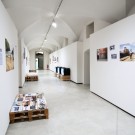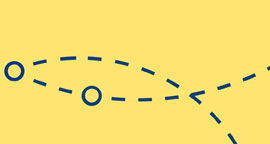Centre for Contemporary Culture at Palazzo Strozzi
Palazzo Strozzi
Paulo Nazareth

Untitled, 2012
from “Noticias de America (News from the Americas)”series
Stampa fotografica su carta cotone / Photo printing on cotton paper
Courtesy Mendes Wood DM, São Paulo
Warning: A non-numeric value encountered in /var/www/vhosts/strozzina.org/httpdocs/admin/wp-content/plugins/lightbox-gallery/lightbox-gallery.php on line 443
- PAULO NAZARETH
Untitled, 2011-13 Stampe fotografiche su carta cotone / Photographic prints on cotton paper P.NAZARETH EDIÇÕES / LTDA. Planfleto, 2005-13 Stampa a getto d’inchiostro su carta / Inkjet prints on paper Important Public Notice, 2006 video performance, 10’ Para que no encuentren mis huellas en el deserto (Noticias de América), 2011-2012 video performance, 5’45’’ Broken flags (Noticias de América), 2011/12 video performance, 2’12” Courtesy l’artista / the artist e / and Mendes Wood DM, São Paulo © CCC Strozzina, Palazzo Strozzi, Firenze / photo: Martino Margheri
- PAULO NAZARETH
Untitled, 2011-13 Stampe fotografiche su carta cotone / Photographic prints on cotton paper P.NAZARETH EDIÇÕES / LTDA. Planfleto, 2005-13 Stampa a getto d’inchiostro su carta / Inkjet prints on paper Important Public Notice, 2006 video performance, 10’ Para que no encuentren mis huellas en el deserto (Noticias de América), 2011-2012 video performance, 5’45’’ Broken flags (Noticias de América), 2011/12 video performance, 2’12” Courtesy l’artista / the artist e / and Mendes Wood DM, São Paulo © CCC Strozzina, Palazzo Strozzi, Firenze / photo: Martino Margheri
- PAULO NAZARETH
Untitled, 2011-13 Stampe fotografiche su carta cotone / Photographic prints on cotton paper P.NAZARETH EDIÇÕES / LTDA. Planfleto, 2005-13 Stampa a getto d’inchiostro su carta / Inkjet prints on paper Important Public Notice, 2006 video performance, 10’ Para que no encuentren mis huellas en el deserto (Noticias de América), 2011-2012 video performance, 5’45’’ Broken flags (Noticias de América), 2011/12 video performance, 2’12” Courtesy l’artista / the artist e / and Mendes Wood DM, São Paulo © CCC Strozzina, Palazzo Strozzi, Firenze / photo: Martino Margheri
- PAULO NAZARETH
Untitled, 2011-13 Stampe fotografiche su carta cotone / Photographic prints on cotton paper P.NAZARETH EDIÇÕES / LTDA. Planfleto, 2005-13 Stampa a getto d’inchiostro su carta / Inkjet prints on paper Courtesy l’artista / the artist e / and Mendes Wood DM, São Paulo © CCC Strozzina, Palazzo Strozzi, Firenze / photo: Martino Margheri
- PAULO NAZARETH
Untitled, 2011-13 Stampe fotografiche su carta cotone / Photographic prints on cotton paper P.NAZARETH EDIÇÕES / LTDA. Planfleto, 2005-13 Stampa a getto d’inchiostro su carta / Inkjet prints on paper Courtesy l’artista / the artist e / and Mendes Wood DM, São Paulo © CCC Strozzina, Palazzo Strozzi, Firenze / photo: Martino Margheri
- PAULO NAZARETH
Important Public Notice, 2006 video performance, 10’ Para que no encuentren mis huellas en el deserto (Noticias de América), 2011-2012 video performance, 5’45’’ Broken flags (Noticias de América), 2011/12 video performance, 2’12” Courtesy l’artista / the artist e / and Mendes Wood DM, São Paulo © CCC Strozzina, Palazzo Strozzi, Firenze / photo: Martino Margheri
- PAULO NAZARETH
Untitled, 2011-13 Stampe fotografiche su carta cotone / Photographic prints on cotton paper P.NAZARETH EDIÇÕES / LTDA. Planfleto, 2005-13 Stampa a getto d’inchiostro su carta / Inkjet prints on paper Courtesy l’artista / the artist e / and Mendes Wood DM, São Paulo © CCC Strozzina, Palazzo Strozzi, Firenze / photo: Martino Margheri
- PAULO NAZARETH
Untitled, 2011-13 Stampe fotografiche su carta cotone / Photographic prints on cotton paper P.NAZARETH EDIÇÕES / LTDA. Planfleto, 2005-13 Stampa a getto d’inchiostro su carta / Inkjet prints on paper Courtesy l’artista / the artist e / and Mendes Wood DM, São Paulo © CCC Strozzina, Palazzo Strozzi, Firenze / photo: Martino Margheri
- PAULO NAZARETH
P.NAZARETH EDIÇÕES / LTDA. Planfleto, 2005-13 Stampa a getto d’inchiostro su carta / Inkjet prints on paper video performance, 2’12” Courtesy l’artista / the artist e / and Mendes Wood DM, São Paulo © CCC Strozzina, Palazzo Strozzi, Firenze / photo: Martino Margheri
- PAULO NAZARETH
Untitled, 2011-13 Stampe fotografiche su carta cotone / Photographic prints on cotton paper P.NAZARETH EDIÇÕES / LTDA. Planfleto, 2005-13 Stampa a getto d’inchiostro su carta / Inkjet prints on paper Important Public Notice, 2006 video performance, 10’ Para que no encuentren mis huellas en el deserto (Noticias de América), 2011-2012 video performance, 5’45’’ Broken flags (Noticias de América), 2011/12 video performance, 2’12” Courtesy l’artista / the artist e / and Mendes Wood DM, São Paulo © CCC Strozzina, Palazzo Strozzi, Firenze / photo: Martino Margheri
- PAULO NAZARETH
Untitled, 2011/2012 Stampa fotografica su carta cotone / Photo printing on cotton paper Courtesy Mendes Wood DM, São Paulo
PAULO NAZARETH (Brazil, 1977)
Paulo Nazareth’s work is based not on the production of individual finished works but in the constant flux of efemeras, fleeting and temporary traces: notes, photographs, videos, objects, leaflets and posters, through which it becomes possible to reconstruct experiences and encounters or to capture the performative interventions undertaken during his travels. The artist has made the act of walking the foundation of his artistic practice, traversing continents on foot, crossing borders, passing through entire territories, as demonstrated in the journey on foot from Brazil to America, completing the voyage in New York with the symbolic washing of his feet in the Hudson River (Noticias de America, 2011-2012). Through the act of walking the artist questions his own sense of self, in a condition of physical and symbolic mobility. The experience of passing through different contexts, of being a foreigner, far away from familiar people and places, transforms our perception of reality, intensifying every action and every encounter.
Main references are historic examples like land or performance art of the 1970s, revisited with a manifestly tongue-in-cheek approach, as can be seen from the explicitly amatorial quality or the entrusting of the actual filming of his videos or photographs to people he fortuitously meets along the way. The languages used in his writings reflect a peculiar mix of influences and cultures. His style is distinctly naïf, combining personal notes with fragments that seem to emulate the content of historical or scientific books.
A fundamental aspect of Nazareth’s research is the dimension of multi-ethnicity inherent in today’s society, especially in Brazil, for which he sees himself as a typical example. On his mother’s side Nazareth has indigenous roots of the Brazilian people, while on his father’s side his origins are African (from the period of the slave deportations) and Italian (from the European migrations of the early 20th century). His research brings together various reflections on the interconnections between peoples and continents reviewed in the light of their biographical roots, according to a vision that is at once poetic and political. For instance, the video Important Public Notice documents a performative action in New Delhi, India, where the artist distributes a leaflet in three languages describing on one hand the story of the discovery of the Americas, and on the other the history of the various waves of migration in Brazil, also including personal items such as the somatic and ethnic characteristics of himself and his ancestors.
Nazareth’s work is deliberately “anti-aesthetic”, consciously eschewing any form of embellishment or technical ostentation. As the artist himself declares: “The possibility of life happening is wonderful. That interests me, the fragility of life, and the precariousness.”
Paulo Nazareth (1977, Brazil; lives and works in Belo Horizonte) embodies the idea of the artist as a sort of connector, a performative decoder or a kind of philosopher. His work draws on language, ideas, actions and objects in order to establish or reveal the bonds that exist between people and their surroundings. Simple but strong gestures are used to evoke historical memory as well as highlighting social and economic tensions and class struggle—tensions especially apparent to him in Brazil and, more widely, in South America. Nazareth has had solo exhibitions at MASP – Museu de Arte de São Paulo Assis Chateaubriand, Sao Paulo (2012-2013); Museu de Arte da Pampulha, Belo Horizonte (2007) and the Centro Cultural São Paulo, São Paulo (2009). Nazareth has also participated in numerous group exhibitions, including, Museum as Hub: Walking Drifting Dragging, New Museum, New York (2013); Bienal de Montevideo, Montevideo, Uruguay (2013); Bienal de Benin, Cotonou, Benin (2012-2013); Il va se passer quelque chose, Maison de l’Amérique Latine, Paris (2012); Mythologies, Cité Internationale des Arts, Paris (2011); Caos e Efeito, Itaú Cultural, São Paulo (2011). He has taken part in wide array of artist residency programs: Buenos Aires, Argentina (Taller Imaginario, 2010); Belo Horizonte, Brazil (JACA, 2010); Jakarta, Indonesia (ruangrupa, 2009 and Galeri Nasional, 2008); Jatiwangi, Indonesia (Jatiwangi Art Factory, 2008) and New Delhi, India (Khoji Studios, 2006), among others. His work can be found in the permanent collections of the Pinacoteca do Estado de São Paulo; Museu de Arte Moderna do Rio de Janeiro – The Gilberto Chateaubriand Collection; Astrup Fearnley Museet of Modern Art, Oslo and Thyssen-Bornemisza Art Contemporary, Vienna.
« back to exhibition
| M | T | W | T | F | S | S |
|---|---|---|---|---|---|---|
| « Jun | ||||||
| 1 | 2 | 3 | 4 | 5 | 6 | 7 |
| 8 | 9 | 10 | 11 | 12 | 13 | 14 |
| 15 | 16 | 17 | 18 | 19 | 20 | 21 |
| 22 | 23 | 24 | 25 | 26 | 27 | 28 |
| 29 | 30 | 31 | ||||

















